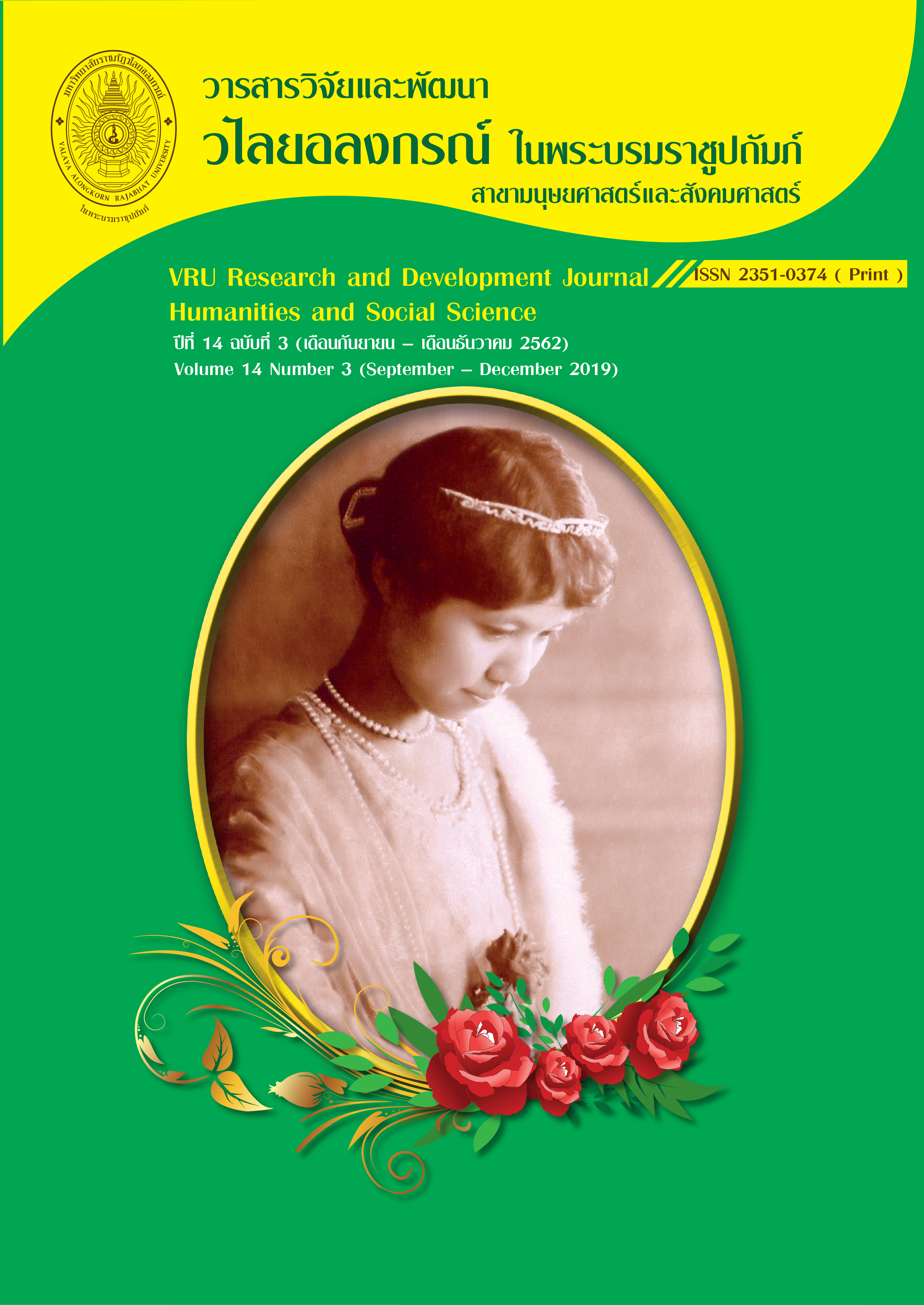DEVELOPMENT OF YOUTH’S ROLE IN PARTICIPATORY TRASH MANAGEMENT, BAN THAPCHANG MOO4, TAMBON THAKWIEN, WATTANANAKHON DISTRICT, SAKAEW
Main Article Content
Abstract
The objectives of the research were to develop and find out activities to improve youth’s role and to study the results of making activities of youth in participatory trash management Ban Thapchang Moo4, Tambon Thakwien, Wattananakhon District Sakaew, by using Participatory Action Research: Data collection used the anthropology method. It consisted of a walking route, community’s calendar and discussions in focus groups. 15 community residents were interviewed in –depth. Many techniques were applied to analyze the community such as making inside and outside mapped routes, making production calendars and seasonal calendars, a community’s timeline and compiling an expert directory. Participatory Action Research was implemented. The results found that activities for developing youth’s role in participatory trash management were: 1) Produce community’s space for youth to learn their community through the instrument of participation in the community, including, the making of inside and outside maps, the making of a flow chart of community and the community’s calendar. 2) Workshop to develop project and research tools. 3) Collecting data by in –depth interviewing of 15 key community residents for information. 4) Workshops to develop projects to solve community problems by using “SWOT” Analysis technique and appreciation-influence-control: “A-I –C technique”. 5) Solving problems by setting up bill-boards warning “Don’t throw trash” in prohibited areas.For the results of activities in participatory trash management Ban Thapchang Moo4, Tambon Thakwien, Wattananakhon District, Sakaew were: 1)Discussion among youth in community the topic of community development and being able to change behaviors and ideas and being able to find out the methods and ways from those discussions that is 1.1) Campaign to dispose of trash properly by setting up bill-boards to protect throwing trash in prohibited areas. 2) Setting up a youth’s committee of about 10 people in order to implement a trash watch and control program in community. Additionally, by setting up their duties. 2.1) monitor the trash problem in community. 2.2) Campaign to give knowledge to people both in community and outsiders in disposal of trash properly and by telling and distributing brochure. 3) Creating a community channel to watch the environment in community and gather to make activities by using LINE social communication application. Finally, there was waste segregation in schools by suggesting how to separate waste before disposing. For example, people in community were able to separate all kinds of waste such as plastics, paper, glass bottles and biodegradable waste and dispose in suitable trash cans and further, to realize the importance of separated waste by watchful teen groups in the community. It was learned that much of the community trash was as a result of “outsiders” from other communities hauling and dumping rubbish and trash in the district.
Article Details
ลิขสิทธิ์บทความวิจัยที่ได้รับการตีพิมพ์เผยแพร่ในวารสารมนุษยศาสตร์และสังคมศาสตร์ วไลยอลงกรณ์ ในพระบรมราชูปถัมภ์ ถือเป็นกรรมสิทธิ์ของคณะมนุษยศาสตร์และสังคมศาสตร์ มหาวิทยาลัยราชภัฏวไลยอลงกรณ์ ในพระบรมราชูปถัมภ์ ห้ามนำข้อความทั้งหมดหรือบางส่วนไปพิมพ์ซ้ำ เว้นแต่จะได้รับอนุญาตจากมหาวิทยาลัยเป็นลายลักษณ์อักษร
ความรับผิดชอบ เนื้อหาต้นฉบับที่ปรากฏในวารสารมนุษยศาสตร์และสังคมศาสตร์ วไลยอลงกรณ์ ในพระบรมราชูปถัมภ์ เป็นความรับผิดชอบของผู้นิพนธ์บทความหรือผู้เขียนเอง ทั้งนี้ไม่รวมความผิดพลาดอันเกิดจากเทคนิคการพิมพ์


